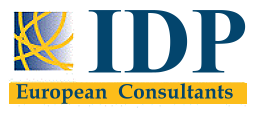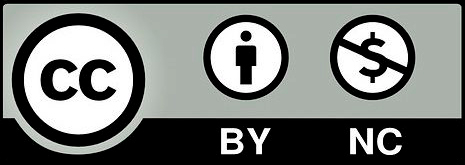Glossary
 A financial planner:
A financial planner:
a person working with clients to help them manage their money and reach their long-term financial goals by proposing a specific service (Investopedia).
 Accrued of interest:
Accrued of interest:
Accrued interest represents the cumulative monetary amount resulting from an investment or debt over an elapsed period of time.
 APR:
APR:
The APR (Annual Percentage Rate), as well as the NIR, it is expressed as a percentage, and is calculated according to a standardised mathematical formula that takes into account the nominal interest rate (NIR) of the operation, the frequency of payments (monthly, quarterly, half-yearly, etc.), the bank charges, and the expenses of the operation.
 Bank card:
Bank card:
It is a payment instrument issued by a financial institution. With the card, you can pay instantly, as if you were carrying physical cash on you, withdraw money from ATMs (Automated Teller Machines) and even finance the purchase of goods and services in the short term.
 Bank transfer:
Bank transfer:
These are transactions that occur when a person instructs his or her bank to withdraw money from his or her account and deposit it into another person's account at the same or a different bank.
 Bizum:
Bizum:
Bizum is an instant money transfer service that allows you to send money from one mobile phone to another without needing to know the account number, just the phone number linked to a bank account. "Bizum" is synonymous with making an immediate payment by mobile phone in a colloquial way.
 Budget:
Budget:
A family budget is a document that summarises in figures, in an organised way, the income and expenditure of a family over a certain period of time.
 Capitalization:
Capitalization:
This consists of giving up current capital (by lending or investing it) in order to obtain a higher capital in the future. The difference between the value of the future capital and the current capital is the interest.
 Collection:
Collection:
A collection is when we actually receive the sum of an income. For example, we receive a collect when our employer pays our salary through a bank account or in cash. Or when a customer pays an invoice issued by a retailer.
 Coupon:
Coupon:
When we talk about deposits, the coupon is the final return on the product, i.e. the total percentage that can be earned on the capital invested.
 Credit:
Credit:
Credit implies that there is a creditor (usually a bank) and a debtor (who must pay back the money). A credit card makes available an amount greater than the balance of the current account with which it is associated, as it is in effect a credit at the holder's disposal, which is usually returned at the end of the month.
 Credit:
Credit:
The bank grants a maximum limit of money and the customer can draw on this money according to his or her needs at any given time. That is, you could use all the money granted, only part of it, or none at all. Interest is only paid on the amount used (although there may be fees for the undrawn balance), and as you repay the money you can continue to draw more as long as you do not exceed the limit granted. The usual ways of obtaining financing through credit are "credit cards", "credit facility" or "credit line", which is articulated through a current account.
 Debit:
Debit:
A debit card implies a payment commitment obligation that is usually settled on the spot and with existing funds. When a debit card is used, it is obligatorily linked to a current account and allows only the balance on the account to be drawn on.
 Demand deposit:
Demand deposit:
They guarantee total liquidity of the funds deposited. In other words, the holder can withdraw the money at any time on request, either at a branch, at an ATM, through remote banking or by means of a transfer. On the other hand, their profitability is usually very low or non-existent, or even negative. There are two types: checking/current accounts and savings accounts.
 Discounting:
Discounting:
Is the early disposal of future capital, for which a lower amount (current value) is received. The difference between the future capital and the current capital is the discount.
 ESG:
ESG:
stands for Environmental, Social and Governance and refers to the three key factors for measuring the sustainability and ethical impact of an investment.
 Exchange rate:
Exchange rate:
The exchange rate is the ratio between the value of one currency and another, i.e. it tells us how many units of one currency are needed to obtain one unit of another.
 Fee:
Fee:
Fees are the amounts payable to banks for the services they provide. The most common ones, in relation to accounts and deposits, are: maintenance fees, administration fees, overdraft fees, transfer order fees, and fees for withdrawing money from an ATM of another network or institution.
 Financial advisor:
Financial advisor:
a person whose job is to provide financial advice to clients (Oxford Languages).
 Financial equilibrium:
Financial equilibrium:
Full financial equilibrium occurs when the balance between inflows and outflows of money coincide.
 Financial risk:
Financial risk:
Financial risk is the potential losses incurred by an investor when investing in a business that uses borrowed money (Accounting Tools).
 Financial sustainability:
Financial sustainability:
A budget must be sustainable, which means that the regular income for the year is sufficient to cover regular expenditure and the repayment of loan instalments previously contracted.
 Foreign currency account:
Foreign currency account:
A foreign currency bank account is an account that operates in a currency different from the euro.
 Fraud:
Fraud:
An intentionally deceptive action designed to provide the perpetrator with an unlawful gain or to deny a right to a victim. Types of fraud include tax fraud, credit card fraud, wire fraud, securities fraud, and bankruptcy fraud.
 Fund:
Fund:
A sum of money saved or made available for a particular purpose.
 Greenwashing:
Greenwashing:
it is a deceptive communication or marketing practice pursued by companies, institutions and bodies that propose their activities as eco-sustainable, emphasizing the positive effects of some initiatives and at the same time trying to hide the negative environmental impact of other initiatives or of the company as a whole.
 Gross Domestic Product:
Gross Domestic Product:
Gross Domestic Product (GDP) is the monetary value of goods –from foodstuffs, vehicles, machinery or textiles– and services –such as health, education, etc.– produced at the national level during a given period of time.
 Indebtedness:
Indebtedness:
It is the action of becoming indebted. Indebtedness is the set of payment obligations (debts) owed by a person or a company to a third party, which may be an institution (such as a bank), a company or another person.
 Inflation:
Inflation:
Inflation is the generalised and sustained increase in the prices of goods and services in a country over a given period of time. It results in a loss of purchasing power, as the value of the currency depreciates. That is, inflation makes your money worth less and less.
 Interest:
Interest:
When we talk about bank deposits, interest refers to the money that a customer receives for lending his money to the bank. The interest will be determined by the interest rate and the type of deposit contracted.
 Investment:
Investment:
the act of putting money, effort, time, etc. into something to make a profit or get an advantage, or the money, effort, time, etc. (Cambridge Dictionary).
 Investment:
Investment:
The action or process of investing money for profit.
 Labour:
Labour:
When we talk about the balance between supply and demand for labour in the labour market, labour is the quantity exchanged for wages.
 Licence:
Licence:
an official document that gives you permission to own, do, or use something, usually after you have paid money and/or taken a test (Cambridge Dictionary).
 Linked deposits:
Linked deposits:
The linked deposits are investment banking products: you deposit capital in the bank and in exchange it offers a profitability. However, in this type of deposit, the final remuneration will always be linked to the evolution of a stock market share, an index (e.g. Ibex35, Eurostoxx, etc.), an interest rate (e.g. Euribor) or an exchange rate (e.g. euro-dollar).
 Liquidity:
Liquidity:
Liquidity is the ability of an asset to be easily converted into money in the shortest possible time. For deposits, it is determined by how easy it is to recover the investment made, without loss of capital or interest.
 Liquidity:
Liquidity:
Liquidity refers to the efficiency or ease with which an asset or security be converted into ready cash without affecting its market price. The most liquid asset of all is cash itself.
 Loan:
Loan:
A bank loan is the operation whereby the bank lends a certain amount of money, previously stipulated in a contract, to a client. After the agreed time has elapsed, the client must return the capital loaned, as well as the interest previously agreed with the bank.
 Mixed savings-investment deposit:
Mixed savings-investment deposit:
Mixed or dual deposits are a combination of fixed-term deposits and index-linked deposits. In this case, part of the capital is placed in a fixed-term deposit for a certain period of time and at a certain interest rate.
 Mortgage loan:
Mortgage loan:
These are loans intended to finance the purchase or restoration of a home. This type of financing, in addition to involving larger amounts of money than personal loans, has a real guarantee for the bank. In other words, if the client does not return the loan, the bank can sell the mortgaged property to repay the debt or become the owner of the property. Thus, as it has an effective guarantee, it is one of the safest loan operations for the entity that grants it and, consequently, the interest rate applied is lower than that of a personal loan.
 NIR:
NIR:
(Nominal Interest Rate), is the interest rate that has been agreed with the financial institution for the operation. It reflects the price the institution charges for lending or pays for depositing. It does not include expenses or commissions, and its periodicity does not have to be annual.
 Non-financial Disclosure (NFD):
Non-financial Disclosure (NFD):
The NFD is a document in which social and environmental aspects are reported, with a focus on corporate sustainability policies, personnel management methods and commitment to the fight against corruption and respect for human rights. Its importance is crucial not only in terms of transparency, but also in terms of brand reputation, with effects on investors' choices. The non-financial reporting obligation concerns public-interest entities, such as banks or insurance companies, and listed companies.
 Payment:
Payment:
While an expenditure is when an obligation to deliver a sum of money has been incurred, payment is when the money is delivered physically or through a debit to a bank account.
 Personal loan:
Personal loan:
This type of loan is normally used for the purchase of consumer goods and services: a car, a computer, furnishing the house, going on holiday, studying abroad... They are called personal loans because they have our present and future personal guarantee. This means that the bank bases the loan on the customer's commitment to pay. It can also include guarantors. Due to the high risk involved in this operation, they usually have a high interest rate.
 Portfolio Diversification:
Portfolio Diversification:
The process of investing money in different asset classes and securities in order to minimize the overall risk.
 Reverse mortgage:
Reverse mortgage:
This is a loan secured by a mortgage on the habitual residence, granted in one lump sum or through periodic payments, to a person who must be over a certain age - from 65 years old - or prove a degree of disability (equal to or greater than 33%) or dependence (severe or great dependence), and cannot be repaid until the time of death.
 Scam:
Scam:
An illegal plan for making money, especially one that involves tricking people.
 Social Lending (also peer-to-peer lending):
Social Lending (also peer-to-peer lending):
it is a form of refundable loan between private individuals in which the intermediation between supply and demand takes place through specialized online platforms. The loan is generally linked to the start of a business project.
 Socially responsible investment (SRI):
Socially responsible investment (SRI):
it is a type of investment considered socially responsible due to the nature of the business that a company conducts. Socially responsible investments can be directed towards individual companies or mutual funds that have a positive social impact.
 Term deposit:
Term deposit:
This is a banking product in which we give our money to the bank for a certain period of time and at the end of the term we receive the amount given plus the agreed interest. They generally offer a higher return than a demand account, in exchange for sacrificing the availability of the money during the contracted term, and usually involve a penalty for withdrawing the money before the stipulated term. There are two types: fixed-term and structured.
 Wage:
Wage:
When we talk about the balance between supply and demand for labour in the labour market, the wage is the price and the quantity. It is what workers receive in return for their labour.









